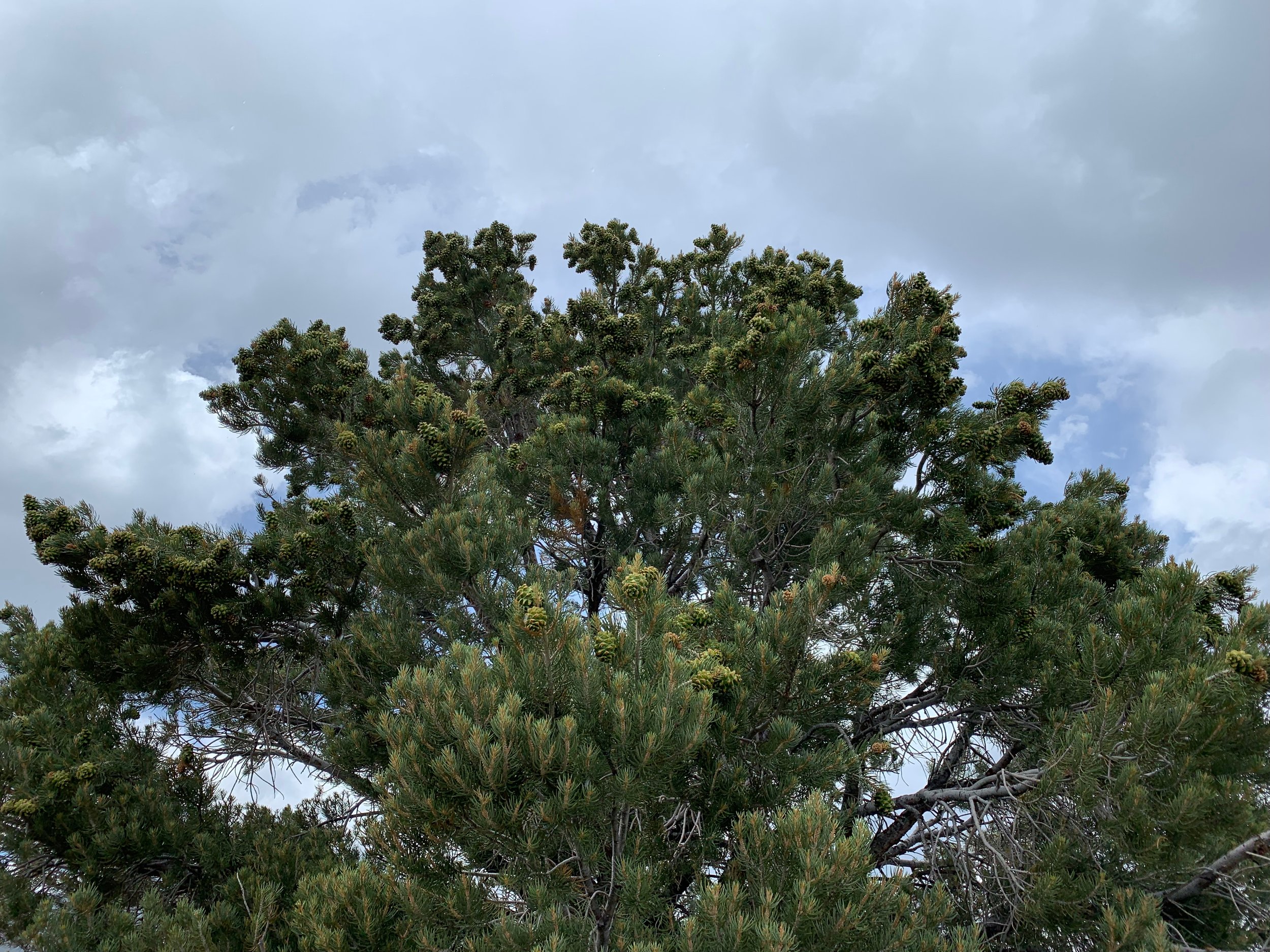
Frequently Asked Questions
-
Pinyon-juniper woodlands cover nearly four million acres across California and provide important ecosystem services, including Indigenous traditional foods, silvopasture for livestock grazing, recreational opportunities, and wood harvest. These ecosystems also provide important wildlife habitat for many obligate species, including the Pinyon Jay, and are an important source of carbon storage.
Pinyon-juniper ecosystems are also central to the worldviews, social identities, and cultural practices of many Indigenous peoples. These ecosystems are home to dozens of Tribal Nations in California, whose cultural practices and social identities are closely tied to these ancestral lands. Pinyon pine seeds, or pine nuts, are among the most culturally significant food resources in the United States, and they remain central to the resilience of Indigenous communities. In many areas, pine nuts also provide a critical income stream for Tribal communities, which is jeopardized by unprecedented pinyon pine mortality and limited regeneration.
Recent hot droughts and wildfires have caused millions of pinyon pines to die, raising concerns that this unique habitat is unusually vulnerable to climate change. The same environmental challenges that have killed adult pinyon trees also limit the potential for reproduction via diminishing seed production and seedling survival, and the enduring effects of Indigenous land dispossession and ongoing settler colonization impact Tribal Nations’ capacity to mitigate the effects of climate change on these culturally important ecosystems.
-
The PiCCA project’s overarching goal is to increase the resilience of pinyon-juniper woodlands to environmental change. Our project has four main goals:
Establish a woodland monitoring network to monitor woodland health and pine nut production across the Eastern Sierra. Host community science monitoring days to track changes based on weather trends.
Understand the factors that impact pinyon seed production. Sample pinyon trees throughout California to understand how climate, genomics, and stand structure might influence seed production.
Inform community-driven climate resilience planning. Engage communities to better understand forest uses, stewardship values, and the cultural and social impacts of climate change in the Sierra Nevada.
Elevate Tribal Nations’ leadership in improving climate resilience by supporting indigenous-led forest stewardship, Tribal community science and knowledge-sharing programs, and help build long-term capacity.
Promote effective and inclusive partnerships through collaboratively developed research design, shared project governance, and safeguards to protect Indigenous data sovereignty.
-
The PiCCA project is an interdisciplinary effort and relies on collaboration across multiple groups, including Tribal Nations, social scientists, ecologists, local NGOs, and federal agencies.
Learn more about the PiCCA partners here!
-
The initial “seed” phase of this project will take place over two years (August 2023 - August 2025). After the seed phase, we plan to seek additional funding to for stewardship planning and implementation.
